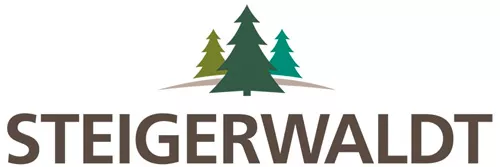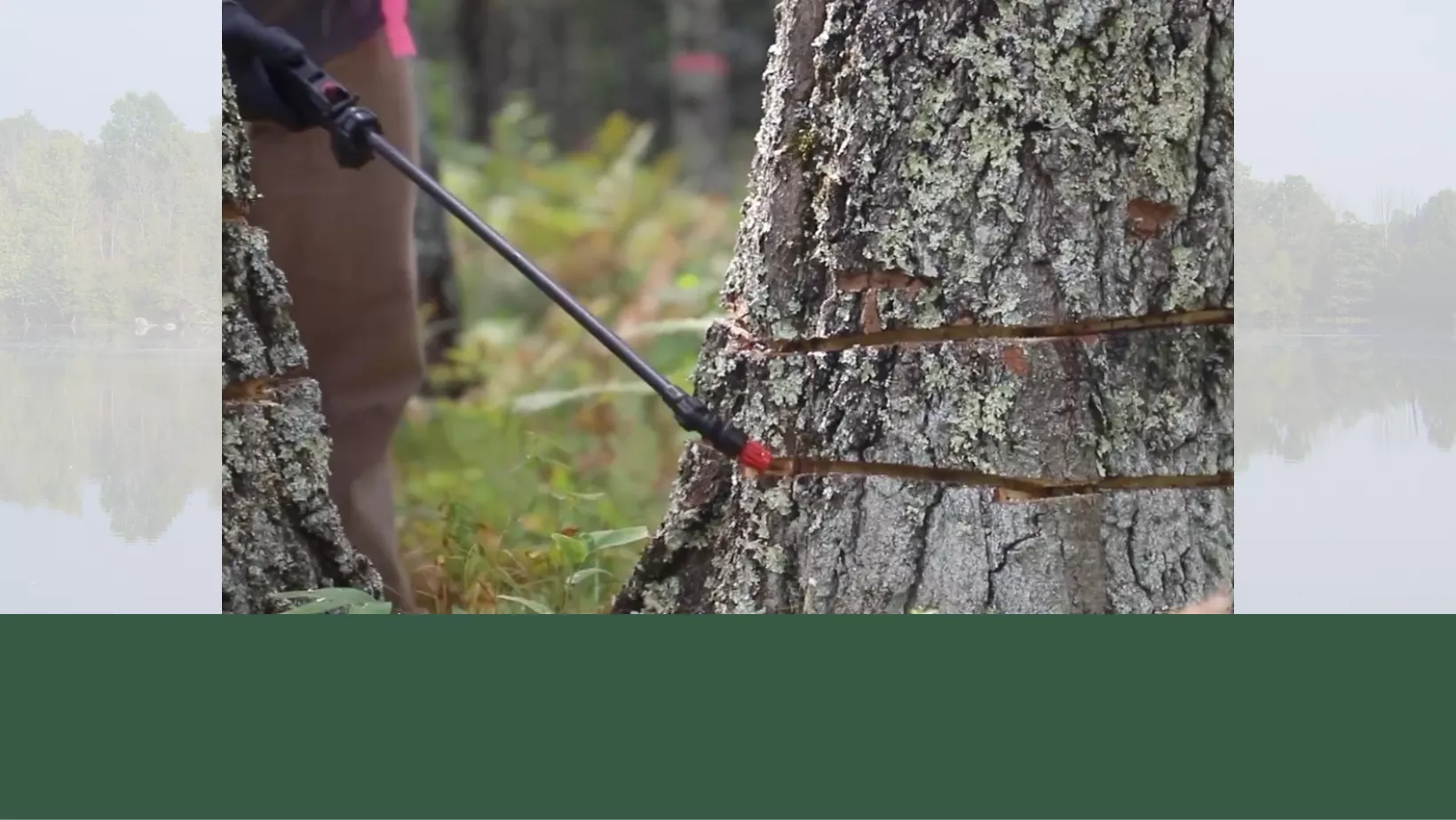The Environmental department at Steigerwaldt utilizes a variety of different application methods. The three highlighted today are
- Basal Bark Treatment
- Foliar Spray Treatment
- Cut Stump Treatment
Basal bark treatment is used on plants with woody stems that are approximately six inches wide. The herbicide is applied to the base of that stem where it will seep in and move to the roots, causing the plant to eventually die off. Common Wisconsin invasive species that this method is used to treat are buckthorn and Japanese barberry.
Foliar spray treatment is sprayed directly onto the leaf surfaces of the plant. The herbicide is then sucked into the leaves and eventually reaches the roots where it kills the entire plant. This method is common in smaller plants and ones that are in abundance. Some invasive species in Wisconsin this treatment works best for are Japanese knotweed and garlic mustard.
Finally, cut stump treatment begins by cutting all the stems of the plant near the base. The herbicide is then applied to the freshly exposed inner part of the stem. From there, it oozes down the side of the stem and seeps into the roots where it effectively kills the plant. Cut stump treatment is used against Japanese honeysuckle and on oak trees to prevent the spread of oak wilt, an invasive fungal disease.
– Andrew Baranowski, Environmental Specialist







